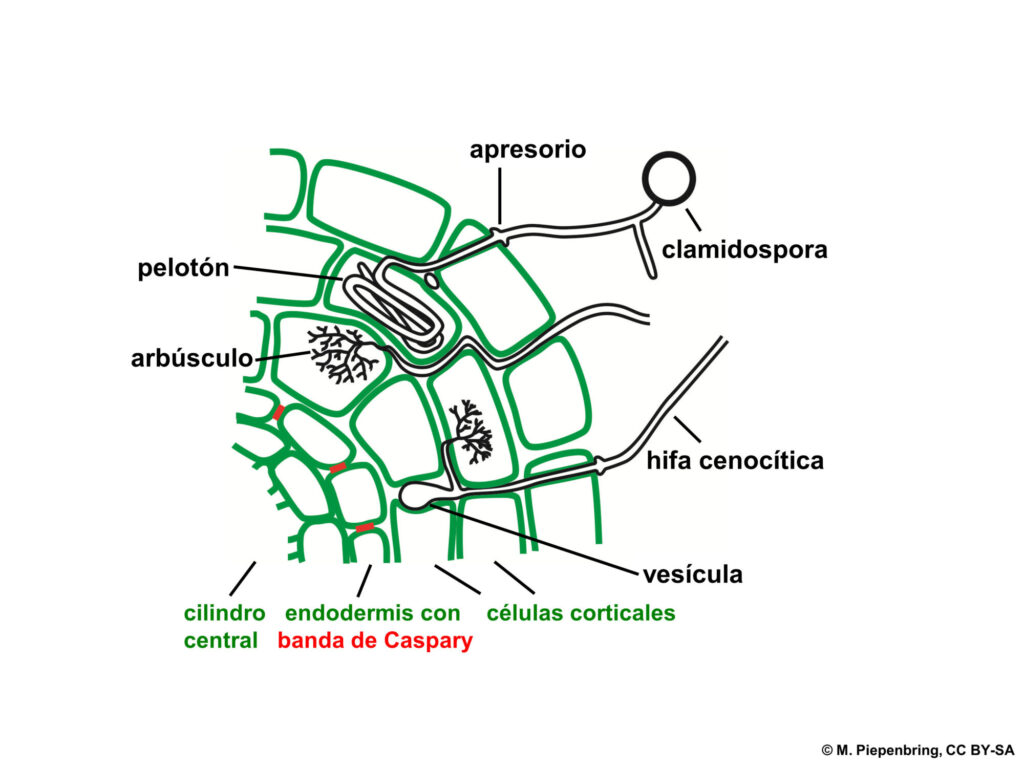
It was some months ago, we talked about mycorrhizae in general, and in particular about endomycorrhizae, which we at Clean-Biotec have been working with for the last four years. Many of you have asked us how they are formed and how this symbiosis works.
Mycorrhizal fungi are maintained in the soil either in the form of spores, mycelial networks, inside active roots or in fragments of colonised roots. Any of these structures are capable of reproducing the fungus and are known as propagules. To begin symbiosis, a fungal hyphae must start from a propagule and establish a kind of dialogue with the host plant that inhibits its defence mechanisms and allows the fungus to enter. On this first contact, the fungus differentiates, forming an “appressoria” which penetrates the root and develops inside it. Once inside, it colonises the cells of the root cortex both inter- and intracellularly, dividing dichotomously inside the cell and forming an arborescent structure with very thin walls, where the exchange of nutrients and signals between the plant and the fungus takes place. This structure is called an arbuscule.
Once the root is colonised, the hyphae develop outwards, forming a highly branched, three-dimensional mycelium around the root, which reaches further into the soil than the root hairs and considerably increases the plant’s absorption capacity, so that 1 cm of root can support up to 1 m of external hyphae. This mycelium is able to absorb nutrients beyond the phosphorus depression zone surrounding the root, reducing the distance between the plant and the nutrient. This ability of the hyphae is the main reason for the benefit of this mycorrhizal symbiosis, which provides the plant with ammonium, nitrate, copper, zinc and other microelements, and facilitates water uptake by the plant.
A few weeks after the start of infection, the fungus can produce spores. Soil environmental conditions modulate sporulation, which is favoured by water stress.
Once colonisation is consolidated, both organisms – plant and fungus – begin their life together, functioning symbiotically and modulated by environmental conditions. From this moment on, the root cannot be considered as, but as a mycorrhiza.
Jaizme-Vega, M.C. 2019. Mycorrhizae, an agroecological strategy to optimise crop quality. Phytoma-ICIA-Government of the Canary Islands.
More information:
Clean-Biotec
laboratorio@clean-biotec.com
(+34) 941 238 261
www.clean-biotec.com


